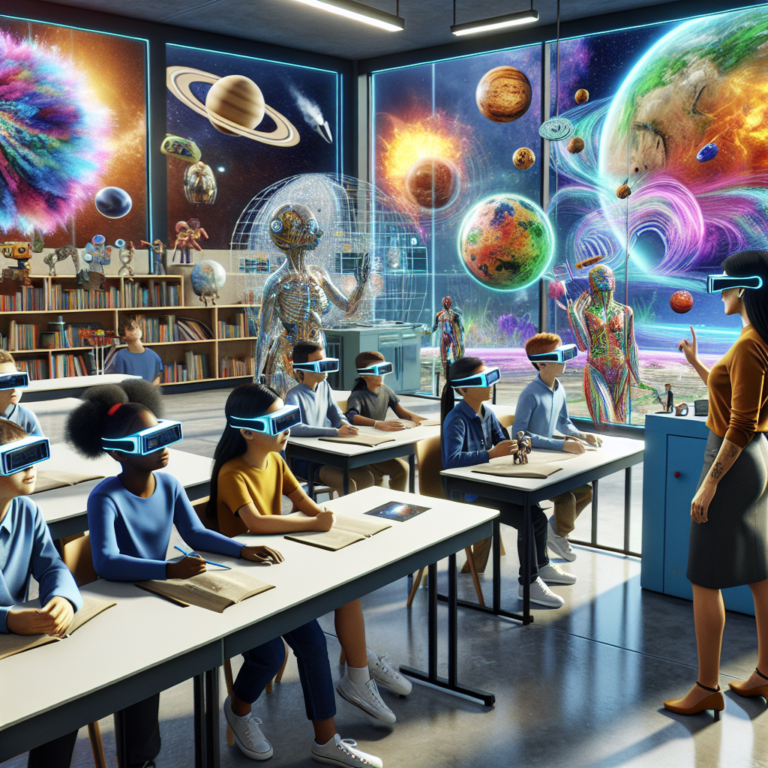How AR Education Glasses Could Transform Learning Environments
Revolutionizing Learning with AR Education
Imagine stepping into a classroom where learning becomes an exhilarating adventure. With AR education glasses, students can dive into virtual 3D models, enjoy interactive video lectures, and explore educational materials that feel incredibly lifelike. The introduction of these glasses can reshape the entire educational experience and make learning more engaging for everyone involved.
The Innovative Technology Behind AR Education Glasses
AR education glasses are not just another tech gadget; they embody a major technological leap. Designed to seamlessly merge the physical and digital realms, these glasses boast several features ideal for modern classrooms.
- Exceptional Visuals: Equipped with cutting-edge optical-grade lenses, these glasses provide a broad 70-degree field of view, ensuring clear images without stray light interference.
- User-Friendly Controls: The glasses include a remarkable wristband that utilizes electromyography (EMG) sensors, allowing for gesture-based control. This intuitive interaction system combines voice, eye, and hand-tracking capabilities for an easy user experience.
- Freedom of Movement: A portable computing device eliminates messy wires, encouraging seamless interaction and movement during lessons.
Enhancing the Learning Journey with AR
Interactive and Engaging Educational Experiences
AR education glasses make learning a more interactive experience, igniting curiosity and creativity among students. With these innovative tools, learners can:
- Visualize Complex Concepts: Use interactive 3D models to grasp challenging subjects like science, math, or art in a whole new way.
- Conduct Virtual Experiments: Engage in simulated lab experiments, promoting safety while providing valuable hands-on experience.
- Immerse in Lessons: Journey through time or space with captivating lessons that place students in exciting historical contexts or unique environments.
Tailored Learning Experiences
The advanced AI capabilities of AR education glasses pave the way for personalized learning tailored to each student’s needs.
- Instant Feedback: The AI can deliver real-time insights on completed assignments, guiding students toward areas needing improvement.
- Adaptive Content: These glasses can modify the difficulty of materials based on performance, offering suitable challenges for each learner.
Fostering Inclusion and Accessibility
AR education glasses stand to bridge gaps in accessibility and inclusion in education.
- Remote Learning Opportunities: Students from remote or underserved areas can access quality educational resources without being physically present in classroom settings.
- Support for Special Needs: The user-friendly gesture control and voice commands benefit those with disabilities, simplifying their interaction with educational content.
Real-World Applications Across Subjects
Bringing Education to Remote Areas
In many regions, including parts of Africa, AR education glasses are making a significant positive impact. For example, in countries like Rwanda, Nigeria, and South Africa, this technology reaches over 500,000 students, enhancing educational outcomes in areas with limited internet connectivity.
Engaging in STEM Education
The benefits are quite clear for STEM subjects, where AR education glasses promote:
- Interactive Simulations: Allowing students to participate actively in scientific experiments, making subjects like biology and physics more tangible.
- Virtual Field Trips: Students can experience virtual visits to museums, historical landmarks, or even outer space, enriching lessons in history, geography, and science.
Revolutionizing Language Learning
Language education becomes more enriching with AR education glasses:
- Immersive Language Practice: Engage with virtual native speakers to enhance conversational skills.
- Cultural Exploration: Dive into different cultures and languages through virtual experiences, broadening students’ perspectives.
Addressing Challenges and Future Opportunities
While the potential of AR education glasses is immense, there are hurdles to overcome:
- Affordability and Accessibility: Currently, these glasses are expensive, with a price tag of around $10,000. Bringing down costs is essential for wider adoption in schools.
- Technical Improvements: Enhancing pixel density and resolution remains a priority to offer users a richer visual experience.
Even with these challenges, the future presents promising possibilities. As technology evolves and prices become more reasonable, we anticipate a greater integration of AR education glasses in various educational contexts.
AR education glasses promise to redefine learning as we know it, making it interactive, personalized, and accessible for every student. The potential to enhance educational experiences in the classroom is limitless, and the journey towards this innovative future is just beginning. 🎓




0 Comments